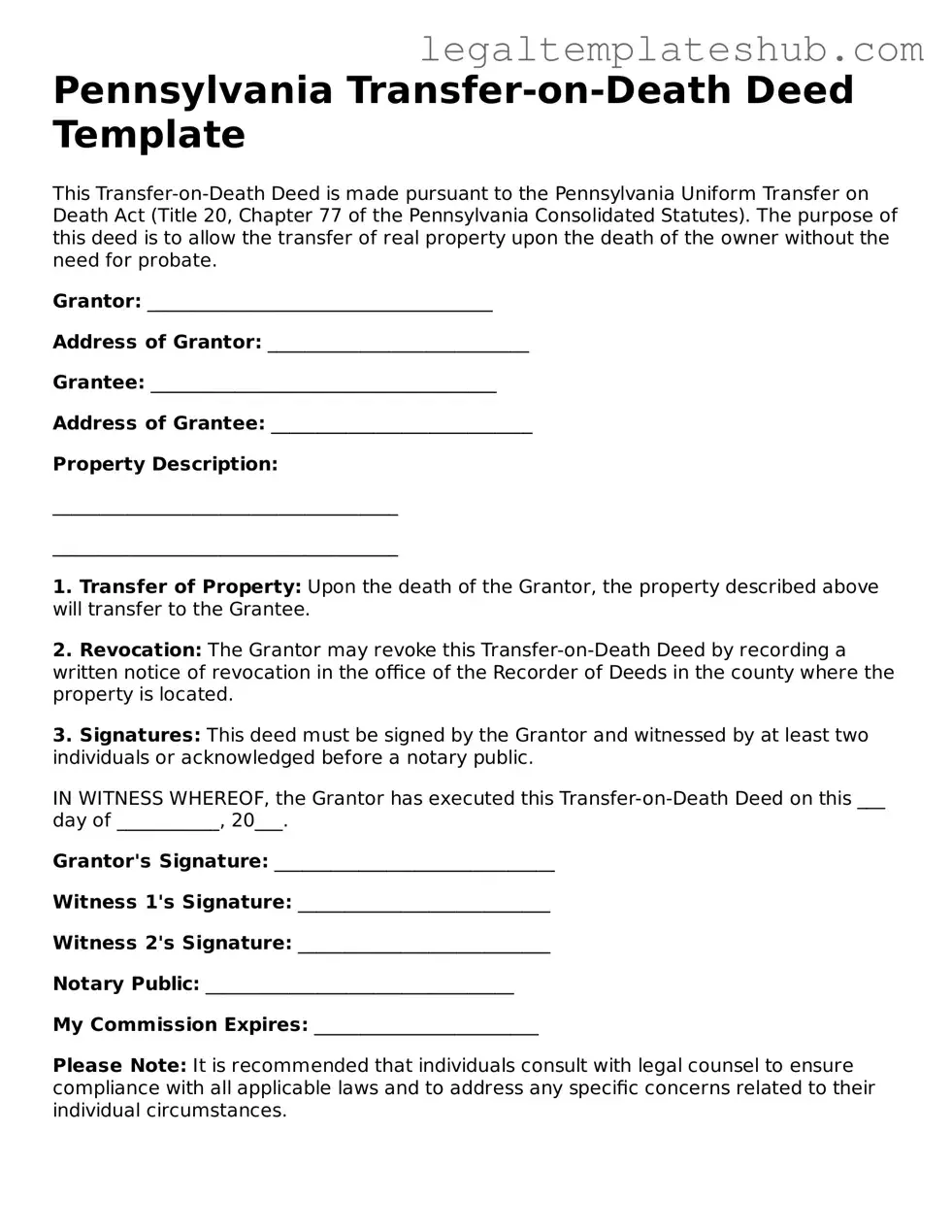Printable Transfer-on-Death Deed Document for Pennsylvania
A Transfer-on-Death Deed is a legal document that allows property owners in Pennsylvania to transfer their real estate to designated beneficiaries upon their death, avoiding probate. This form provides a straightforward way to ensure that your property goes directly to your chosen heirs without the complexities of the probate process. To get started, fill out the form by clicking the button below.
Access Editor
